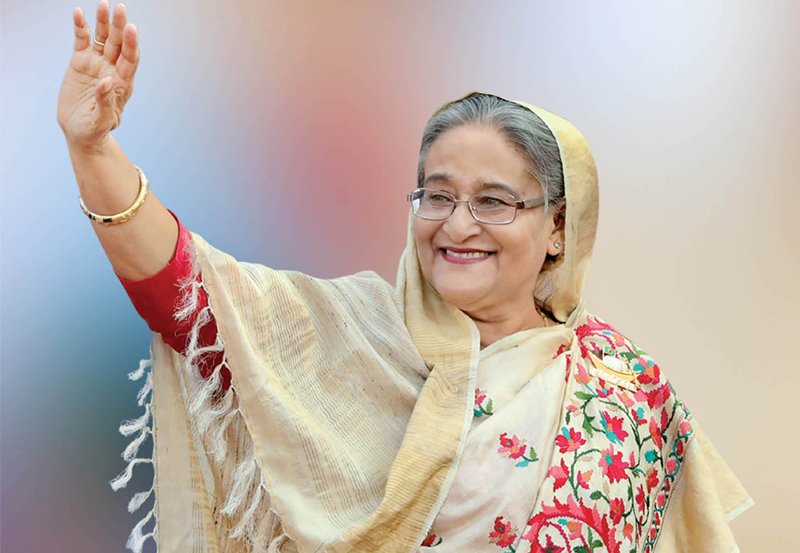Strength of PM’s Crackdown Shows Her Nervousness as Fear Climate Erodes, Say Critics
The Unrest Begins: Student Protests in Dhaka

Hasan, a 33-year-old telecommunications graduate, is living in constant fear and trauma. Hiding for a week, he’s terrified of being arrested by the state for his participation in protests that have gripped Bangladesh. His fear isn’t unfounded – metal pellets fired by the police are still lodged deep in his bones.
When Hasan joined the peaceful protests in Dhaka at the start of July, students across the country were mobilizing against the reintroduction of quotas for government jobs. The courts’ decision to allocate 30% of these jobs to descendants of those who fought in the 1971 war of independence was widely viewed as a political manoeuvre by Prime Minister Sheikh Hasina to solidify her control over the judiciary and appease her allies in the Awami League.
The Escalation: From Peaceful Protests to Violent Clashes
Students, already burdened by an economic downturn and high youth unemployment, saw their hopes for stable employment being dashed. As the protests gained momentum, the government’s response turned violent.
The Rapid Action Battalion, Bangladesh’s elite police force, deployed teargas from helicopters and fired on protesters with light machine guns. Amnesty International confirmed the use of teargas, shotguns, assault rifles, and grenade launchers against unarmed protesters.
Hasan described the attack he witnessed: “We tried to defend ourselves with whatever we could find, but we were mostly unarmed. The police and government-backed student groups attacked us from both sides, firing stun grenades, teargas, rubber bullets, and metal pellets.”
Relentless Crackdown: The Government’s Heavy-Handed Response

Prime Minister Hasina has been in power since 2009, ruling with an increasingly authoritarian grip. Critics say the strength of the crackdown shows her nervousness as the climate of fear begins to break down. More than 200 people have died, and thousands have been injured in the protests.
Faria, a 23-year-old economics student, recounted similar scenes of violence. “There were loud bangs from sound grenades, and our eyes burned from the teargas. We heard continuous rifle shots and started to run towards safety. I still wake up to the nightmares of that scene.”
A Movement Grows: Beyond Quotas to a Fight for Democracy
The violent suppression has transformed the protest movement from an issue of quotas to a larger civilian-led movement against Hasina’s dictatorship. Hasan, who only gave his middle name for safety, said: “This has become a mass movement against a dictator. The prime minister thinks she’s invincible, but she’s becoming a monster.”
The protests have prompted an international response. On Thursday, UN human rights chief Volker Türk called for an independent investigation into the “horrific violence” in Bangladesh.
Hasina’s Justifications and International Reactions

In statements this week, Hasina blamed the violence on political opposition and Islamist groups, claiming she deployed forces to “protect” the students. Over 2,500 members of the opposition have been arrested. However, exiled political analyst Mubashar Hasan argues that violent crackdowns on dissent have been a hallmark of Hasina’s government, including thousands of killings and enforced disappearances.
“These protests signify a struggle between democracy and Hasina’s move towards totalitarianism,” said Mubashar Hasan. “The strength of the crackdown displayed her nervousness. We are seeing a breakdown of the climate of fear, and it’s difficult to see how she will continue with business as usual.”
Temporary Calm: Court Ruling and Future Protests
An uneasy calm settled over Bangladesh after the court ruling on Sunday reduced the quotas to 5%. Student leaders temporarily called off the demonstrations, seeking an apology and justice for those killed. But with no response from Hasina, the protests are set to resume. Many organisers are in hospital or detained by police, with allegations of torture and enforced disappearances.
Bangladesh remains under an indefinite curfew, devastating livelihoods. Hasan, the protester, remains defiant: “The protest is not finished yet. The government may think it has won, but they haven’t. It’s in a resting phase and it will only come back stronger. Next time, a curfew or even the army won’t be able to suppress the people.”
Conclusion: A Movement for Change
The situation in Bangladesh is a critical juncture in its history. The student protests have evolved into a mass movement challenging a decade-long dictatorship. The strength of the state-led crackdown reveals the fragility of Hasina’s grip on power. As the people of Bangladesh continue to fight for their rights and democracy, the world watches closely, hoping for a peaceful resolution.


